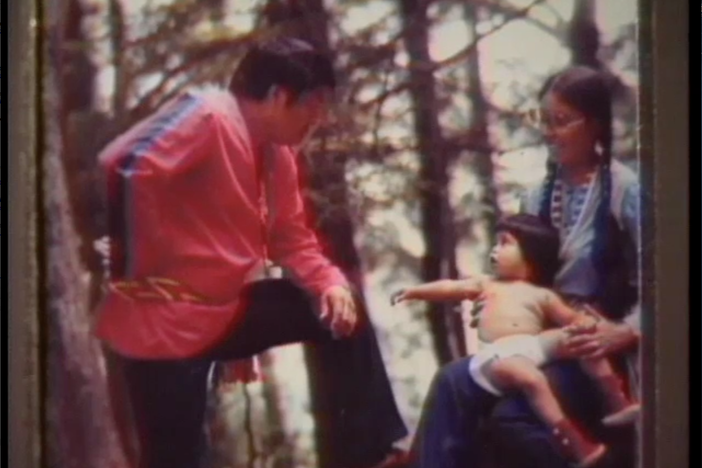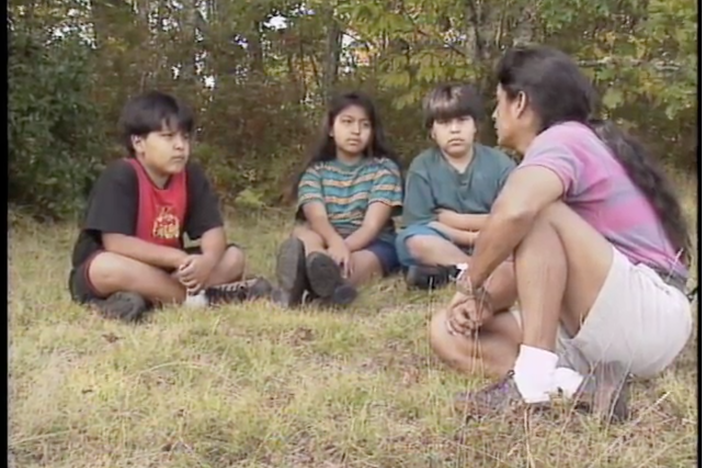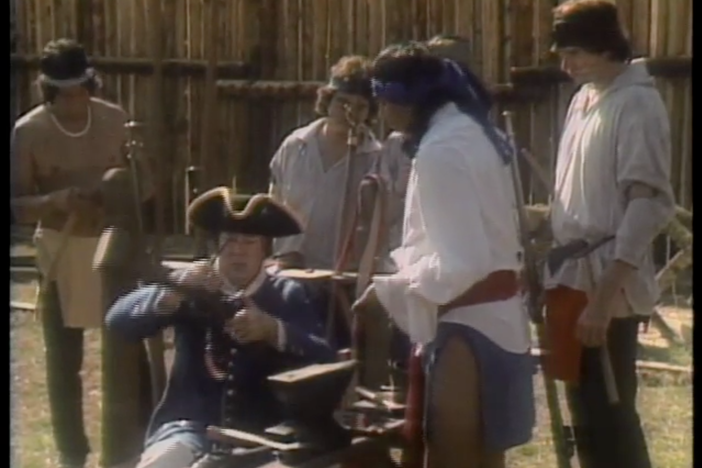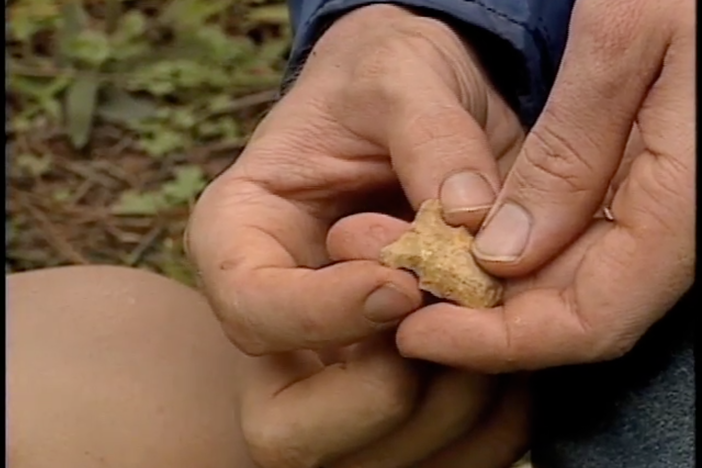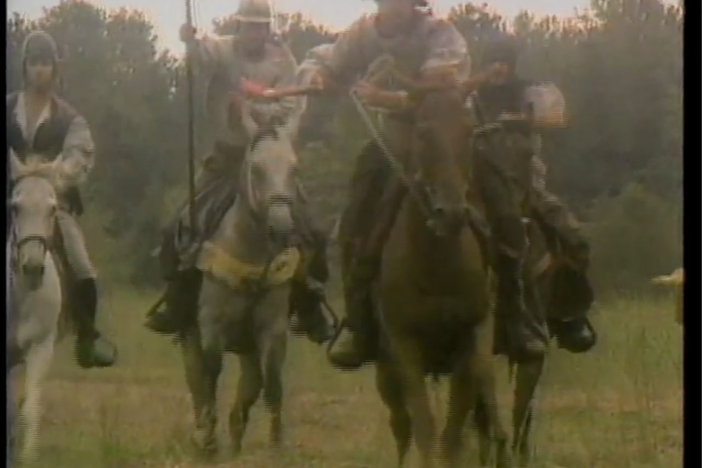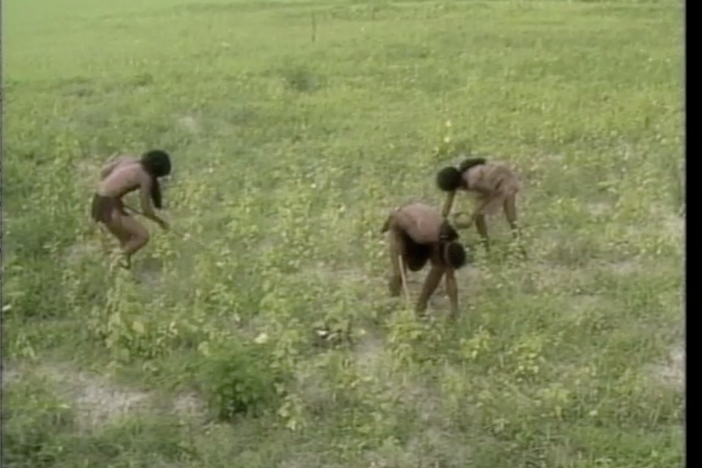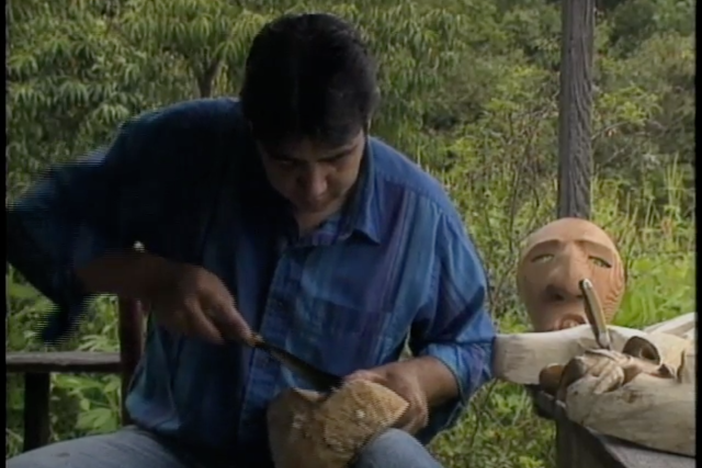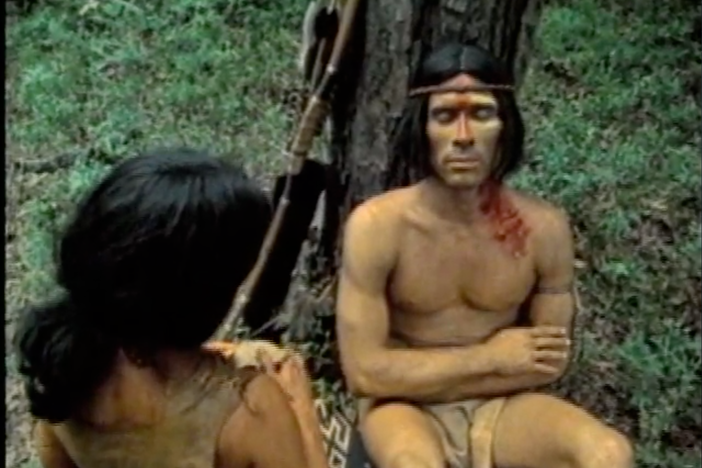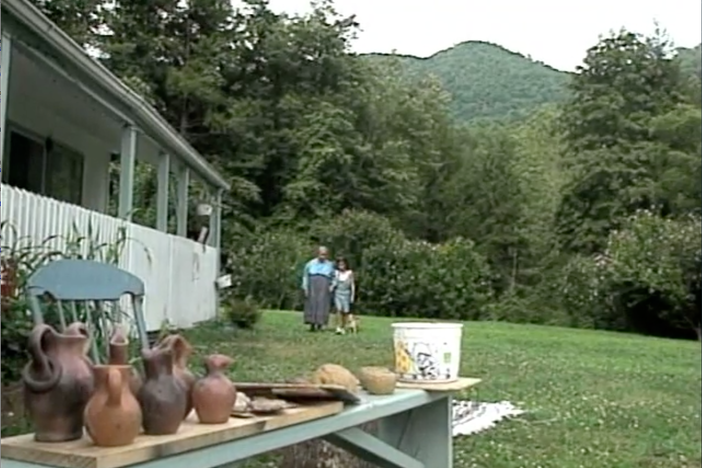Green Corn, Native Gold
Diamond Brown, a Cherokee dancer, describes how corn is the foodstuff responsible for prehistoric Native Americans flourishing in Georgia. Through interviews, reenactments, and visits to significant Native American sites in Georgia, the story of the changing culture of Indians from their arrival and existence as wandering hunters to the development of the mound building culture unfolds.
Green Corn, Native Gold
Diamond Brown, a Cherokee dancer, describes how corn is the foodstuff responsible for prehistoric Native Americans flourishing in Georgia. Through interviews, reenactments, and visits to significant Native American sites in Georgia, the story of the changing culture of Indians from their arrival and existence as wandering hunters to the development of the mound building culture unfolds.
Social Studies
Describe the characteristics of American Indians living in Georgia at the time of European contact; to include culture, food, weapons/tools, and shelter.
1. Why/How did early inhabitants come to the Southern U.S.?
2. Why did Cherokee do the green corn dance?
3. Describe at least four developments that happen to a culture when they begin to settle in one place for a long period of time.
4. How did the Indian mounds originate?
1. Research the history of the Cherokee Indian mounds. Find out for what they were built and what buildings, ceremonies, etc. were on top of these mounds. Then do one of the following:
-Make a diorama of a mound showing what was on top of it and one of the ceremonies that might have been conducted on it.
-Write a small book using drawings to show and writings to tell the history of the Indian mounds, what they were used for, and how they were a part of the Cherokee culture.
-Design and make a PowerPoint presentation on the history and use of the Etowah (or other) Indian mounds in Georgia.
- Your own idea - Make up your own plans about how you would report on this topic and check with your teacher.
2. Research all the foods that were a part of the Cherokee Indian diet when they settled in the southeast. You should prepare, cook and serve these foods to the class. If possible, use the dishes and customs for eating that the Cherokees would have used. You might ask a few classmates to dress as Cherokees and portray a family at dinnertime as they eat these foods. (Learn a few Cherokee words to use at this time - especially the Cherokee word for the foods you prepare.)
fasting: eating little or no food or only certain kinds of food, especially as a religious observance
mastodon: extinct, elephant-like mammals that originated in Africa and inhabited the Northern Hemisphere and South America
mammoth: extinct prehistoric elephants that had long, upward-curving tusks and shaggy, blackish hair
bison: buffalo; cud-chewing mammal having a large head, short, permanent horns, humped shoulders, and a thick brown coat
maize: corn
1. Why/How did early inhabitants come to the Southern U.S.?
These people were all following the food supply: the herds of bison, mastodons, and mammoths that populated the North American continent at that time. There is also evidence that they noticed that it got warmer as they went south and continued their journey until they reached the sea (Atlantic). Along the way, they learned to plant crops which resulted in their staying in one place for a long time - long enough to have a number of people in the society along with its history.
2. Why did Cherokee do the green corn dance?
As these new civilizations began to grow, religion along with superstition and myth grew also. They developed ways of worshiping that went along with these beliefs. One of these was dancing. They did the green corn dance believing that if they honored this crop, the next crop of corn - a major staple of their diet - would be as good or better.
3. Describe at least four developments that happen to a culture when they begin to settle in one place for a long period of time.
When a people or culture settle for a long time - generations - in one place because they have a good food supply, water, and shelter, these people begin to develop:
a.sophistication: they have customs that become unique to that culture - language, ways of making shelter and food, etc.
b.elaborate ceremonies (religion): religion, myths, and legends develop that give reasons for their being and for why things happen as they do
c.elaborate artwork: the pottery and everyday objects that are used have more artwork on them since they will not be thrown away as they travel; there may be objects that are just for decorative use, simply because they have to time to do this and develop it to a high degree
d.leadership (government): when a lot of people live together, especially for a long period of time, they need someone whom they can call leader - someone who can settle disputes that inevitably arise; along with this leadership development comes a system of government - a council or elders who have more experience who can guide the people and keep them organized and out of war.
4. How did the Indian mounds originate?
Archeologists believe the original mounds were platforms built for the chief's family to live on. But when that chief died, his house was torn down and the home of the new chief was built upon a new layer-right on top.
